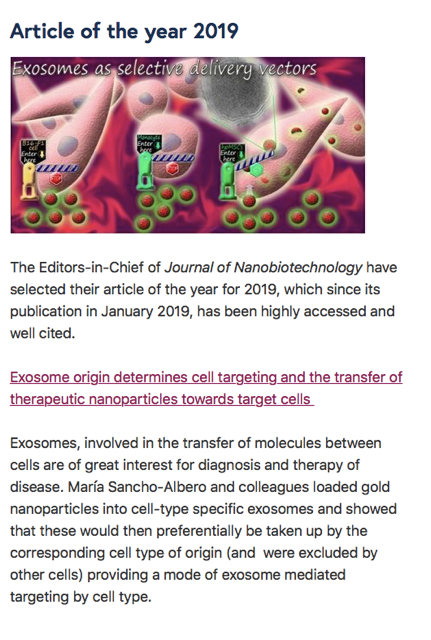The Editors-in-Chief of Journal of Nanobiotechnology have selected our article Exosome origin determines cell targeting and the transfer of therapeutic nanoparticles towards target cells as article of the year 2019. Since its publication in January 2019, it has been highly accessed and well cited.
Read More
Article of the year 2019!
- 24/02/2020
- Comments off








